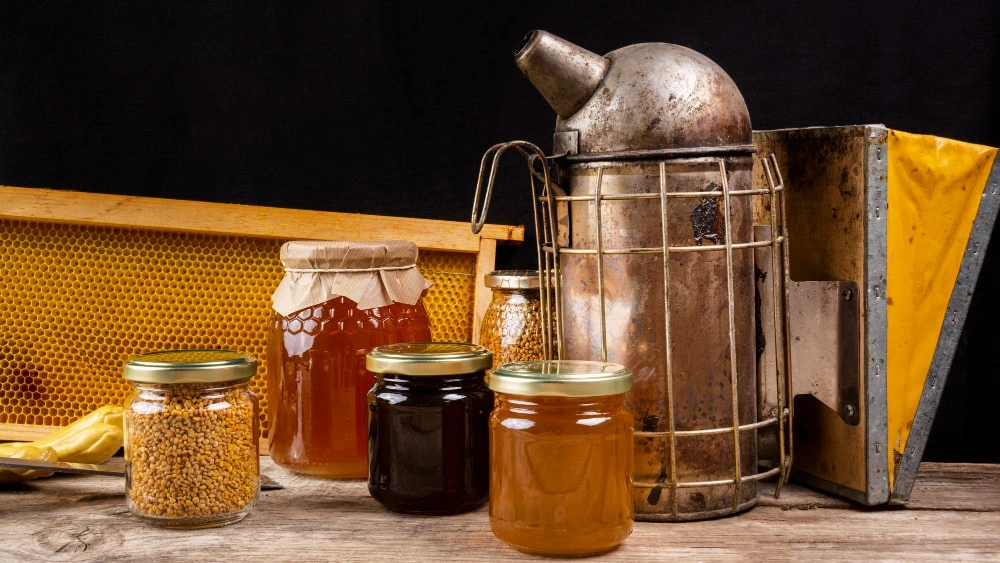BLACK FRIDAY! Profitez de la livraison GRATUITE avec un achat de 400$+ avant taxes. La promo s'applique automatiquement.
The importance of a honey house
The honey house is at the heart of modern beekeeping. It is an essential place for transforming and enhancing hive products such as honey, beeswax, or royal jelly. Whether it’s for small-scale production or larger operations, the honey house plays a central role in a beekeeper’s work. In this article, we will explore the importance of the honey house and the key steps in honey harvesting.
1. What is a Honey House ?
A honey house is where the beekeeper extracts, processes, and packages products from the hive, mainly honey. It’s a dedicated space that adheres to strict hygiene standards to ensure the quality of the harvested hive products, such as honey, pollen, propolis, or beeswax.
2. The Role of the Honey House in Honey Harvesting
During the harvest, the honey house is where frames from the hives, filled with nectar that has been transformed into honey, are brought to be uncapped, extracted, and filtered. The honey extraction process usually involves using a centrifugal extractor. The honey is then left to ripen, which allows impurities to rise to the surface, resulting in a high-quality final product.

3. Producing Other Hive Products in a Honey House
In addition to honey, the honey house also processes other products such as beeswax, used for making candles or cosmetics, royal jelly, known for its nutritional and medicinal properties, and pollen, which is a great dietary supplement. Propolis, with its antiseptic and antibacterial properties, is also processed here and is ideal for boosting the immune system.
4. Different Types of Honey Produced in a Honey House
Each honey house can produce a wide variety of honey depending on the flowers foraged by the bees and the region. For instance, acacia honey is known for its mild flavor, while thyme and lavender honey are appreciated for their strong aromas and medicinal properties. Fir honey, which is rarer, stands out for its woody taste and antibacterial qualities.
5. Why Is a Honey House Essential for Beekeepers ?
The honey house ensures the processing of hive products in optimal conditions while adhering to sanitary standards. It also guarantees the traceability of honey and other products, which is essential for direct sales to consumers. Thus, the honey house becomes the place where the beekeeper adds value to their work, transforming the bees’ labor into a product ready for consumption.
FAQ
Why is a honey house necessary for harvesting honey ?
A honey house allows for the extraction, processing, and storage of honey under optimal hygiene conditions, ensuring the product's quality.
What products can be processed in a honey house ?
In addition to honey, a honey house processes beeswax, pollen, propolis, and royal jelly, which can be transformed into various products such as cosmetics or dietary supplements.
How to choose the right honey ?
The choice of honey depends on your preferences and its benefits. For example, acacia honey is mild, while thyme or lavender honey has more pronounced aromas and medicinal properties.
What are the other benefits of hive products ?
Hive products such as propolis and royal jelly have antiseptic, antibacterial, and nutritional properties, making them valuable health allies.
Display prices in:CAD
